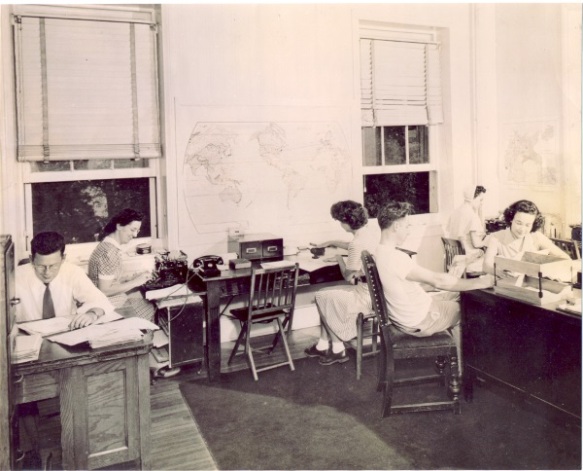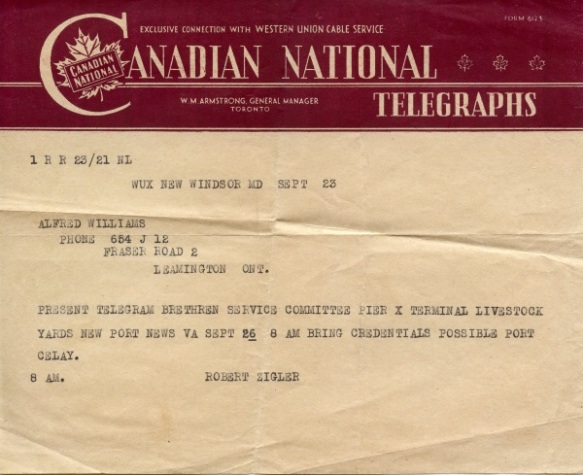One of the first questions I ask a seagoing cowboy in an interview is, “How did you learn about the seagoing cowboy program?” Some say through their church or school, others saw an ad in a church or farm magazine, some heard an ad on the radio, and many learned by word of mouth.
Once interested, the cowboy-to-be contacted the seagoing cowboy office at the Brethren Service Center in New Windsor, Maryland, and put in his application. Then the waiting began. Maybe a matter of hours after an initial phone call if livestock tenders were urgently needed. Maybe a couple of weeks or longer, especially if a longshoreman’s strike was in process.

Located in Old Main at the Brethren Service Center in New Windsor, Maryland, the seagoing cowboy office was the hub of coordination efforts to keep the UNRRA livestock ships manned. Photo courtesy of Brethren Historical Library & Archives
Finally, that telegram or phone call came saying to report to New Windsor or directly to the port of loading. Could have been Baltimore; New York City; Newport News; New Orleans; Portland, Maine; Savannah, Georgia; Houston, Texas.
Bags were packed and the cowboy headed to the port at his own expense, whatever way he could get there. Maybe train, or bus, or car, or thumb. Many had never been out of their state before. Some, even their own county.
Lloyd Gingrich (right) and friend are ready for their adventure on the S.S. Adrian Victory to Poland, July 1946. Photo courtesy of Lloyd Gingrich
Then the process of obtaining seaman’s papers in a strange city began, with trips to a number of offices including that of the Coast Guard, the five and dime store for passport pictures, the doctor for a quick physical exam and inoculations. If the applicant was under 18, he needed to have a permission form from his parents. If he was of draft age, he needed a release from his draft board to leave the country. Finally, the cowboy received his papers showing he was a member of the U. S. Merchant Marine with the classification of “cattleman.”
On receiving his papers, the cowboy took the seaman’s oath. When his ship was ready, he signed on to the ship’s articles, separate articles from what the regular crew signed, making him a member of the seagoing cowboy crew. He was ready for the adventure of a lifetime!
Next post: Seagoing cowboys and the Maritime Union




Thank you for sharing this information and Cowboy stories. It is the heart of Heifer.
Bill
LikeLike
Thanks, Joyce!
LikeLike
Such commitment. And yes, I am certain it was an adventure! I love all the images. Beautiful post, Peggy.
LikeLiked by 1 person